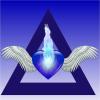 Submitted by LOGOS - Overseer on
Submitted by LOGOS - Overseer on

Spring is in the air! Start planning your garden!
We’ve all heard of botanical and vegetable gardens, but what about an astrological garden?! Botanical Astrology has played an important role in gardening since our ancestors first began planting seeds in the soil to grow food, medicinal herbs and flowers. In ancient times the sun, moon and stars were critical because they were constants in our ancestors' lives. An astrological garden should contain elements to astrology and the sky. Plants with associated names such as Sunflower or New Moon Iris are examples.
Color also plays an important role. For example flowers would be of the color associate with a planet:
Yellow and Orange ~Sun
White ~ Moon
Blue ~ Mercury
Pink ~ Venus
Bright Red ~ Mars
Purple ~ Jupiter
Blue-Violet ~ Saturn
Fuchsia ~ Uranus
Lavender ~ Neptune
Dark red ~ Pluto
Fruitful Zodiac Signs According To Moon Transit:
Cancer and Scorpio: This is a great time for planting, transplanting, budding and grafting.
Taurus: A semi-fruitful time. Better for root and leafy crops.
Capricorn and Libra: Semi-fruitful Better for root crops, tubers and vines.
Barren Zodiac Signs According To Moon Transit:
Leo: This is the most barren sign.
Virgo, Gemini and Aquarius: This is a good time for weeding, cultivating and solving pest problems.
Aries and Sagittarius: Plant onions and garlic. Continue weeding.

Your astrological garden needn’t just be flowers. Consider everything – trees, shrubbery, herbs and even some vegetables and fruits if you take a fancy. Here are some astrological rulerships connected to the a fore-mentioned. This list is based upon suggestions by astrologer Alan Leo for planets Sun, Moon, Mercury, Venus, Mars, Jupiter and Saturn. Correspondence to the planets Uranus, Neptune and Pluto come from my research. They are normally excluded from botanical lists because of their more recent discoveries (Uranus 1781, Neptune 1846, Pluto 1930) but it is time to move the rest of the information into this century and get away from the excuse that they are merely generational planets!
Sun: Almond, angelica, ash tree, bay tree, celandine, centaury, chamomile, corn hornwort, eyebright, frankincense and other aromatic herbs, heart trefoil, juniper, male peony, poppy, marigold, mistletoe, olive, pimpernel, rice, rosemary, rue, saffron, St. John’s wort, sun dew, tormentil, turnsole, vine, wiper’s bugloss; also bay, citrus, and walnut trees.
Moon: Adder’s tongue, cabbage, chickweed, clary, coral-wort, cuckoo flowers, cucumber, dog-tooth, duck’s meat, gourd, hyssop, iris, lettuce, melon, mercury, moonwort, mouse-car, mushrooms, pearlwort, privet, pumpkin, purslain, rattle grass, rosemary, seaweed, spunk, turnips, wallflowers, water arrowhead, watercress, water lily, water violet, white lily, white poppy, white rose, white saxifrage, whitlow grass, wild wallflower, willow, winter green, and all night blooming plants; also maple, olive, palm, and other trees rich in sap.
Mercury: Azaleas, bitter sweet, calamint, caraway, carrots, cascara, coraline, dill, elecampane, endive, fennel, hare’s foot, hazel, horehound, hound’s tongue, lavender, lily of the valley, liquorice, male fern, mandrake, majoram, mulberry, myrtle, olive spurger parsley, pellitory, southernwood, star-wort, trefoil, valerian, wild carrots, winter savory; also hazel, and filbert trees.
Venus: Apples, archangel, artichoke, beans, bearberry, bishop’s weed, black alder, bubbleholly, burdock, cloves, cock’s head, couch grass, cowslip, cranebill, cudweed, daffodils, elder, featherfew, ferns, foxgloves, goldenrod, gooseberry, grapes and other vines, groundsel, kidneywort, lily, little daisy, marshmallows, mint, pennyroyal, pennywort, peppermint, red cherries, roses, sanicle, sea holly, sorrel, spearmint, tansy, throatwort, vervain, violets, wheat; also almond, apple, apricot, ash, cypress, pecan and pomegranate trees.
Mars: All-heal, aloes, anemone, arsmart, barberry, basil, box tree, broom, butcher’s broom, cactus, capers, catmint, coriander, crowfoot, flax-weed, furze-bush, garden cress, garlic, gentian, ginger, hawthorn, honeysuckle, hops, horse radish, horsetongue, hyssop, leadwort, leeks, madder, masterwort, mousetail, mustard, nettles, onions, peppers, plantain, radish, savin, tobacco, wake-robin, wormwood, and all briars and thistles; also trees with thorns.
Jupiter: Agrimony, aniseed, apricots, asparagus, balm, balsam, betony, bloodwort, borage, chestnut, cinquefoil, cloves, currants, daisy, dandelion, hart’s tongue, house leek, jessamine, liver wort, mint, myrrh, nailwort, nutmeg, polypody, rhubarb, sage, scurvy grass, small samphire swallow wort, strawberry, sugar cane, thorn apple, wild pinks, wild succory; also ash, almond, birch, fig, lime, linden, mulberry and oak trees.
Saturn: Aconite, barley, barren wort, beech, black hellebore, blue bottle, comfrey, crosswort, flaxweed, fleawort, fumitory, gladwin, ground moss, hemlock, hemp, henbane, holly, horsetail, ivy, jew’s ear, knap-weed, knotgrass, mandrake, mangel, medlar, moss, navelwort, nightshade, pansies, parsnips, quince, rue, rupture wort, rushes, rye, sciatica wort, senna, shepherd’s purse, sloes, Solomon’s seal, spinach, tamarisk, vervain, wintergreen. Also cypress, elm, pine, willow and yew trees.
Uranus: Dragonwort, spikenard, all fruit trees in general.
Neptune: Rubberplant, hops, tobacco, coffee plants, cotton, opium poppies, fungi, hallucinogenic mushrooms, seaweed (good for fertilizer), tomatoes.
Pluto: Mushrooms, blackthorn trees, horehound, leeks, woad, wormwood, all poisonous plants like yew, monkshood, deadly nightshade.
Plant some crystals!
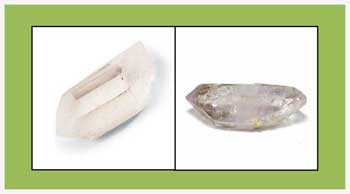
Another consideration for your astro-garden is the use of crystals and stones since they significantly assist growth and health of all botanicals. Quartz Crystals are most commonly used crystals in gardens. Quartz represents the entire Zodiac. Quartz can be placed at each corner of the overall plots or separate plots. Some people also like to place a crystal at the center of each plot as well.
Embed single terminated (single point) crystals with the pointed end facing upwards just below the soil line.
Double terminated (double point) crystals can be placed, lying flat, in a diagonal direction so the crystal generates energy coming in and going out.
It is nice to include some citrine for constant clearing of energies and Boji Stones and seashells as they are useful and will disintegrate into the soil providing minerals and nutrients. Quartz crystal chips scattered on top of soil will add extra energy and some “sparkle” to the scene and may attract butterflies and a few faeries! Small river stones or pebbles bring the astrological element of water to the garden and provide a focus on tranquility and peace. Wind chimes made of agate slices or obsidian needles have a nice bell like tone and not only enhance the beauty of the garden but also contribute earth energy and protection. Remember, the astrological garden is a magickal place!
The shape of the garden plot would also be associated to a planet, constellation or spiral galaxy. The best garden of course is the one that is based upon celestial alignments that represent your personal connection to the Universe and your place in it. Here are some helpful pointers that can help you choose the celestial events that most apply to you:
- If you are an early riser (as in up at dawn) use sunrise alignments.
- If a western view is your favorite choose sunset alignments
- If both your sunrise and sunset view are obstructed or impeded use a noontime shadow alignment.
- Pick a star! Perhaps you want to use Polaris the North Star and if so you’ll be marking the Cardinal Directions.
- Use the solstices or equinoxes (depending where you live and gardening suitability) or even your birthday as timers. It would be a great idea to pick up the copy of the current Old Farmer’s Almanac which contains a good deal of celestial gardening information!
Once you have chosen what suits you best, survey your property decide the best area on your property to plant the garden. If you live in an apartment or have no property space, deck or porch gardens or even a terrarium can be made to suit.
THE ELEMENTAL GARDEN
FIRE GARDEN (Aries, Leo, Sagittarius)

The Fire garden faces South hopefully catching warm winds and breezes. The North side of the garden should be edged by bushes. At the center a large tree should be planted OR an open in-ground fire pit should be built. Plenty of fiery colored plants and flowers should adorn the area. Paths are usually straight and made of stone, brick, or gravel. The garden should be large with plenty of grassy spaces outside of the garden perimeter.
EARTH GARDEN (Taurus, Virgo, Capricorn)
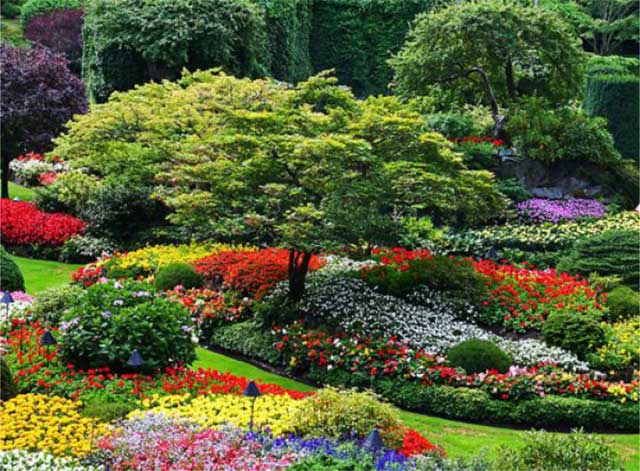
True Earth gardens are usually orchards or vegetable gardens but if a decorative garden is desired it should be facing North. An apple tree or other fruit tree should grace the garden if space permits. Earth gardens are often created with steps of different height levels allow for variation of landscaping and the inclusion of seating. Paths tend to be small and covered in wood chips or decorative stepping stones.
AIR GARDEN (Gemini, Libra, Aquarius)

The air garden is a very open and face East. Fragrance is a necessity so plenty of blossoming flowers trees and bushes are needed. Paths of concrete or light sparkly gravel are quirky and take unexpected turns ending up in lovely respites. Self seeding herbs surround many sections of the garden. Sculptures and other pieces of art grace the entire expanse.
WATER GARDEN (Cancer, Scorpio, Pisces)
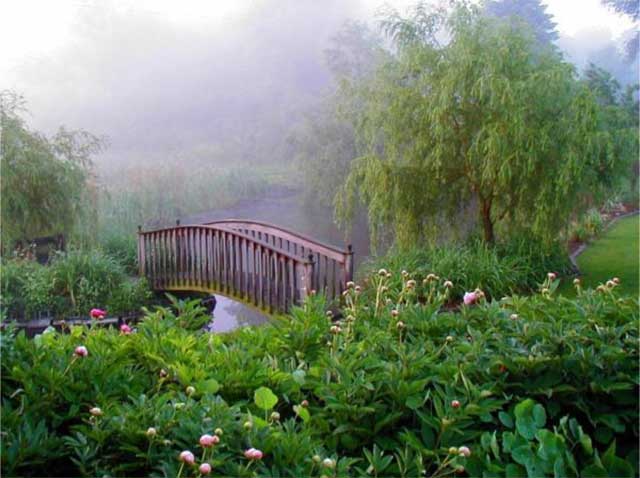
Obviously this garden will be centered around a pond or even better a small waterfall. It should face West and be very mystical by design with labyrinthine paths, dense bushes and mossy banks. There are no hard geometric shapes in this garden rather, Everything is designed organically. Garden edges are not clearly defined but overgrown somewhat. If possible the pond should contain fish preferably Coy. Sheltered areas for contemplation and meditation should be included. It is all very Zen!
THE SUNRISE OR SUNSET GARDEN

This garden works best if you have spacious property. The solstice sunrise and sunset alignments are most northerly in June and most southerly in December. The point where the Sun rises on an Equinox or Solstice should be marked at that visual point with a stone as a way of honoring the cycle of the year. Check out the diagram:
THE NOON-SHADOWS GARDEN
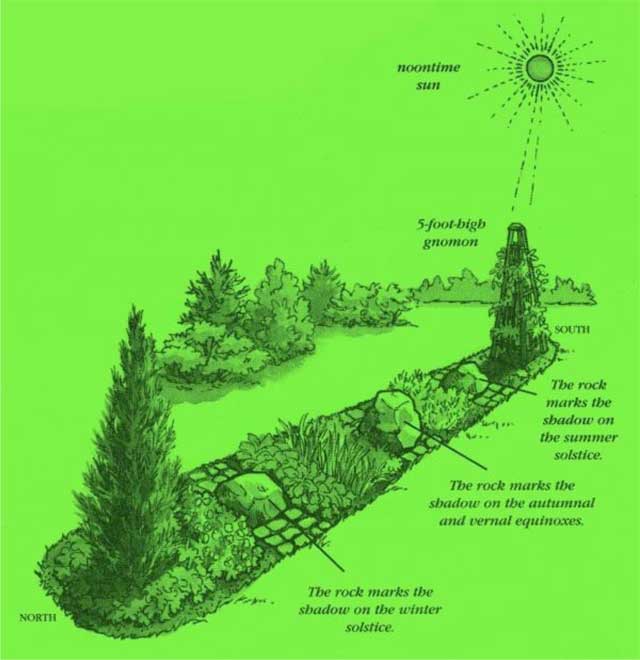
This garden works well if you don’t have a lot of space. You will be marking the noontime shadows using 12:00 pm for Standard Time and 1:00 pm for Daylight Saving Time. This is a simple garden to marks because you just need to locate the spot where the noontime Sun is visible for as much of the year as possible. This garden always contains a gnomon which is a fixed object of any kind such as a sculpture, garden tripod etc. Ideally the gnomon should be at least five feet tall so the noontime shadow on the summer solstice will be at least 1 ½ feet long (the length at midnorthern and midsouthern latitudes). The garden base will run north to south of the gnomon and the bed should be three times the height of the gnomon. Mark the length of gnomon’s noontime shadow every 2-4 weeks along the garden bed and place a large stone there OR use your favorite dates such as your birthday or special occasions to mark the bed. This eventually will become a calendar of the Sun. Check out the diagram:
THE CARDINAL DIRECTIONS GARDEN
This garden includes some help from astronomy: True North comes from the direction of Polaris the North Star. For those at midnorthern latitudes, south comes from the direction of the noontime Sun as it transits the sky in a daily arc. Due east and west come from the sunrise and sunset on the equinoxes.
There is plenty of flexibility with the layout and size of this garden. Pick a good size spot and mark where you think the center of the garden should be. Decide upon the size and the shape while including how far from the center you will mark the Cardinal Directions. The markers can be incorporated into the garden bed at the perimeter or extend beyond the confines of the plants. Get out your compass to determine N,S, E, and W and mark these directions using large rocks (these should be big enough so they can’t be kicked out of place.
To use true astronomical directions go to: www.ngdc.noaa.gov/geomagmodels/Declination.jsp for corrected directions for your location.
Basically this garden is in the shape of a cross - the Cardinal Cross so the beds will run north-south and east-west. At the center create a circle using flat garden stones. A fountain would also be nice. Don’t forget to set in flat garden stones to make pathways for N-S and E-W directions to connect the center of the garden to the four directions. This garden represents alchemical initiation and the element of Fire so be sure to include color associated with the Sun/Leo (yellow/orange), Mars/Aries (bright red) and Jupiter/Sagittarius (purple) in the beds. Check out the diagram:
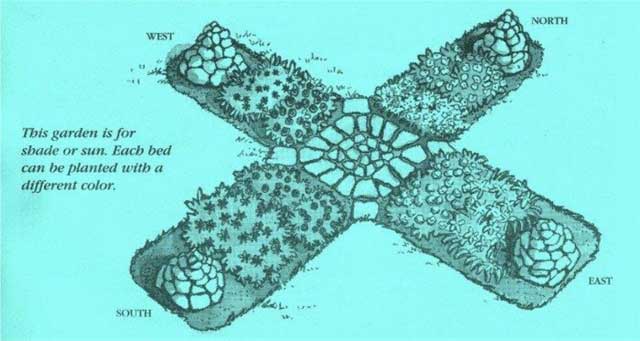
These are just a few examples of what you can do. Anything is possible with use of your imagination, resonation and dedication to Mother Earth and the Universe!
Resources: Astrologer Loni Haas R.MAFA, NCGR, CCHT; Astrologer Alan Leo; Astronomer Judith Young Ph.D; The Old Farmer's Almanac
- 4171 reads